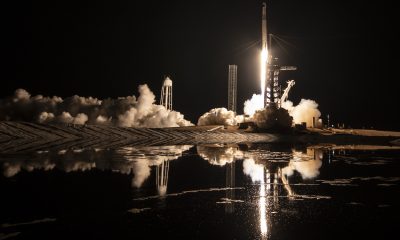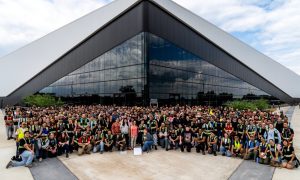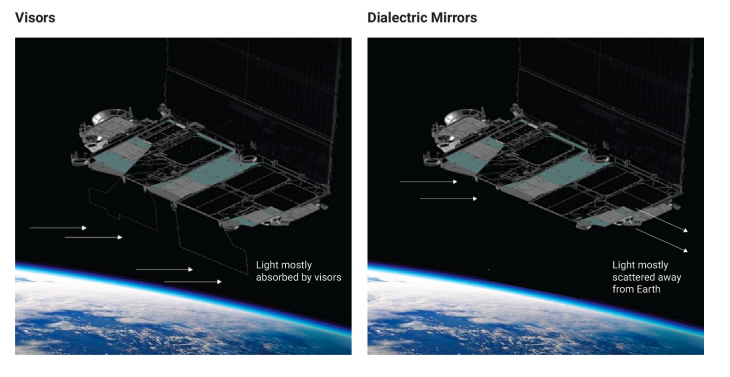

Space
SpaceX shares how it’s making Starlink satellites less bright.
SpaceX shared how it’s making its Starlink satellites less bright. The space exploration company published a document titled, Brightness Mitigation Best Practices for Satellite Operators that outlines how it’s working with the astronomy community to reduce light pollution.
New document from @SpaceX https://t.co/aI17WdaqrF
explaining what they have been doing to make their satellites less bright.
I applaud SpaceX for their work on this (and for making the document public), while remaining concerned to see how bright the Gen2 Starlinks end up being— Jonathan McDowell (@planet4589) July 29, 2022
SpaceX has been criticized for the brightness of its Starlink satellites by astronomers. Elon Musk and the team at SpaceX not only listened to the criticism but are actively responding to it by collaborating with the astronomy community to solve the issue.
SpaceX Is Making Starlink satellites Invisible to the naked eye.
SpaceX noted that through the collaboration, it has identified and mitigated the key causes of satellite brightness. The company is working on making the satellites invisible to the naked eye when they are at their standard operational altitude.
If satellites are illuminated by the sun at night, they can be visible to observers from the earth. However, the visibility of any satellite depends on the materials used for its surfaces.
Since satellites don’t emit their own light, the brightness results from natural sunlight scattering off of the satellites’ surfaces and reflecting down to earth. The light can scatter in two different ways: specular or diffuse.
SpaceX is focusing on specular scatter

SpaceX is investing in specular surfaces. Specular light is reflected at a single angle just like a mirror. Diffuse light reflects from many angles. The image above shows the difference between how specular light scatters and diffuse light scatters.
SpaceX noted that not all materials are highly reflective and some can be absorptive or make the light that is reflected much less bright.
SpaceX’s satellites are visible from the ground in two ways.
- Sunlight scatters off the main body.
- Sunlight scatters from the solar arrays.
To solve this, SpaceX adopted mitigations for both problems for its current, first-generation satellites.
Sun Visors and RF-Transparent mirror films

Sun Visors
For the first-gen satellites, SpaceX developed sun visors that block sunlight from hitting the bottom side of the chassis (body of the satellite.) They were made from materials that engineers developed to be invisible to radio frequencies.
However, the sun visors blocked the laser links that SpaceX uses to expand coverage to remote regions of the world. Additionally, the visors generated significant drag on the satellites. So, SpaceX determined that the sun visors weren’t a long-term solution.
RF- transparent mirror films.
SpaceX developed RF-transparent mirror films as an alternative to the sun visors. The film scatters most of the sunlight away from the Earth. SpaceX said that it has been improving its mirror films to scatter less light back to the earth.
It plans to deploy a new and improved version of the film on its next-generation satellites.
Inter-cell backing material

Another change that SpaceX made to its first-gen satellites involved the inter-cell backing material. The material was initially white but SpaceX changed it to a dark red that reduces the arrays’ brightness.
The downside is that the darkening of the material increases the temperature of the solar array which reduces performance. However, SpaceX will adopt many designs such as this one to reduce the brightness of the satellites.
Dielectric Mirror Film for Starlink satellites.
SpaceX noted that its second-gen satellite will add more capacity to the Starlink network; connecting more people in more places.
The second-gen satellites will use the following three advanced brightness techniques and I will dive into one of them: Dielectric Mirror film.
SpaceX will cover the bottom of the satellites with a second-gen dielectric mirror film. This version reduces the observed brightness ten times better than the first-gen film by using a Bi-Directional Reflectance Distribution Function (BRDF) metric.
You can see how the BRDF for decreases visibility in the chart below.
Credit: SpaceX
Through extensive research and iteration, SpaceX maximized the film’s specular scatter. The core of the film is a Bragg mirror that includes many thin layers of plastic that have a variety of refractive indices which create interference patterns internally to reflect the light.
It also allows radio waves to pass through with no issues. Protective layers of titanium dioxide and silicon dioxide were added to protect the film in thin, pure layers that don’t affect the film itself. Below is a comparison between the first-gen and second-gen mirrors.

SpaceX plans to offer the dielectric mirror film as a product
SpaceX plans to offer the dielectric mirror film as a product on the Starlink website. The reason is that SpaceX can not reduce the effect of satellites on space exploration by itself.
The film will be offered at cost and all operators will be able to use it to reduce the effect of their own constellations.
SpaceX will continue to work with the astronomy community
SpaceX emphasized that not only is the astronomy community’s work important but that it would continue to work with them to reduce the effects of all satellite operations.
“SpaceX is committed to connecting as many people as possible through Starlink, improving the lives of millions of people here on Earth.”
“As a space exploration company, SpaceX is a strong supporter of astronomy and the scientific community.”
You can read the full document here.
I’d love to hear from you! If you have any comments, or concerns, see a typo, you can email me at johnna@teslarati.com. You can also reach me on Twitter @JohnnaCrider1
News
SpaceX Ax-4 Mission prepares for ISS with new launch date
SpaceX, Axiom Space, and NASA set new launch date for the Ax-4 mission after addressing ISS & rocket concerns.
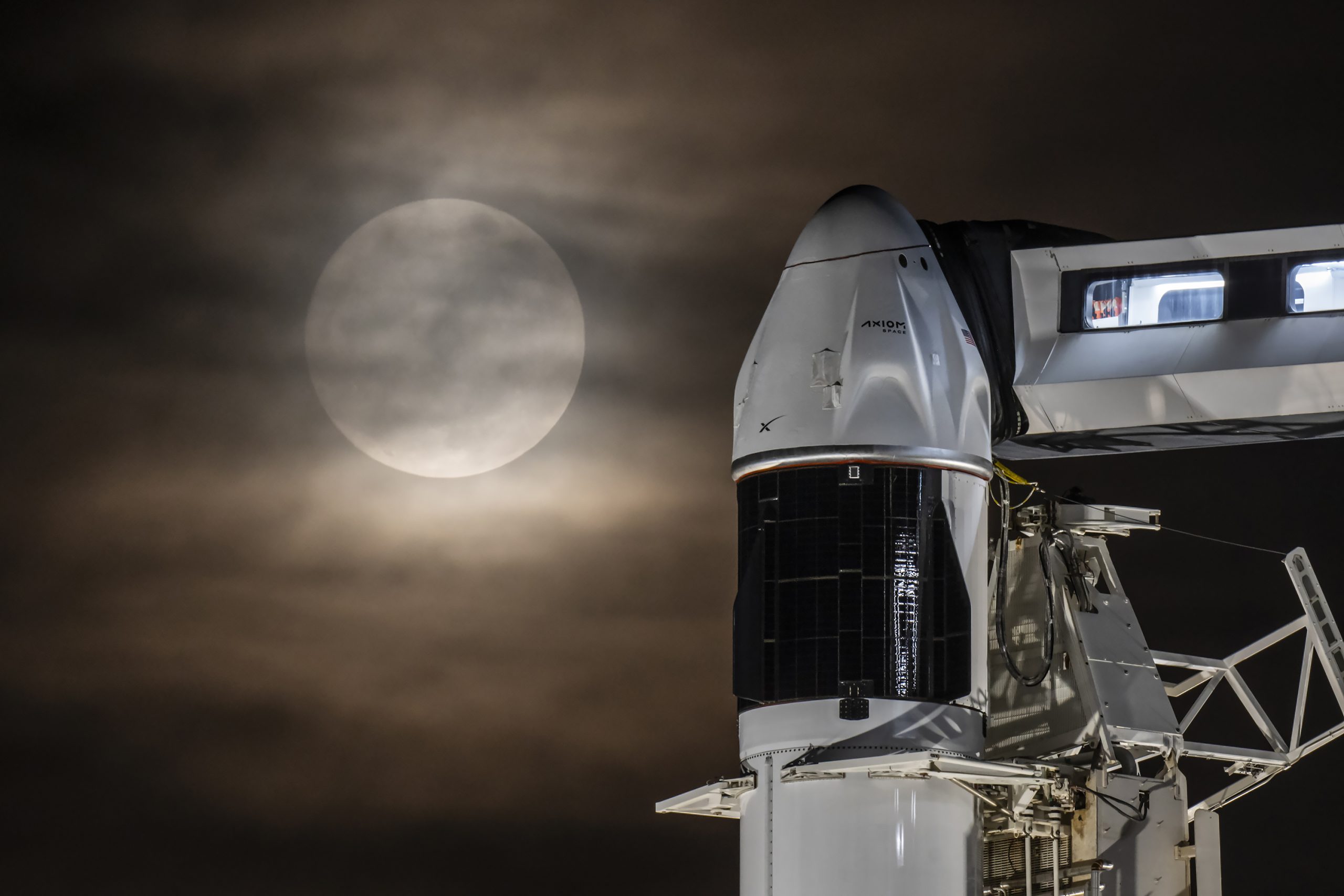
SpaceX is preparing for a new launch date for the Ax-4 mission to the International Space Station (ISS).
SpaceX, Axiom Space, and NASA addressed recent technical challenges and announced a new launch date of no earlier than Thursday, June 19, for the Ax-4 mission. The delay from June 12 allowed teams to assess repairs to small leaks in the ISS’s Zvezda service module.
NASA and Roscosmos have been monitoring leaks in the Zvezda module’s aft (back) segment for years. However, stable pressure could also result from air flowing across the hatch seal from the central station. As NASA and its partners adapt launch schedules to ensure station safety, adjustments are routine.
“Following the most recent repair, pressure in the transfer tunnel has been stable,” a source noted, suggesting the leaks may be sealed.
“By changing pressure in the transfer tunnel and monitoring over time, teams are evaluating the condition of the transfer tunnel and the hatch seal between the space station and the back of Zvezda,” the source added.
SpaceX has also resolved a liquid oxygen leak found during post-static fire inspections of the Falcon 9 rocket, completing a wet dress rehearsal to confirm readiness. The Ax-4 mission is Axiom Space’s fourth private astronaut trip to the ISS. It will launch from NASA’s Kennedy Space Center in Florida on a Falcon 9 rocket with a new Crew Dragon capsule.
“This is the first flight for this Dragon capsule, and it’s carrying an international crew—a perfect debut. We’ve upgraded storage, propulsion components, and the seat lash design for improved reliability and reuse,” said William Gerstenmaier, SpaceX’s vice president of build and flight reliability.
The Ax-4 mission crew is led by Peggy Whitson, Axiom Space’s director of human spaceflight and former NASA astronaut. The Ax-4 crew includes ISRO astronaut Shubhanshu Shukla as pilot, alongside mission specialists Sławosz Uznański-Wiśniewski from Poland and Tibor Kapu from Hungary. The international team underscores Axiom’s commitment to global collaboration.
The Ax-4 mission will advance scientific research during its ISS stay, supporting Axiom’s goal of building a commercial space station. As teams finalize preparations, the mission’s updated launch date and technical resolutions position it to strengthen private space exploration’s role in advancing space-based innovation.
News
Starlink India launch gains traction with telecom license approval
Starlink just secured its telecom license in India! High-speed satellite internet could go live in 2 months.
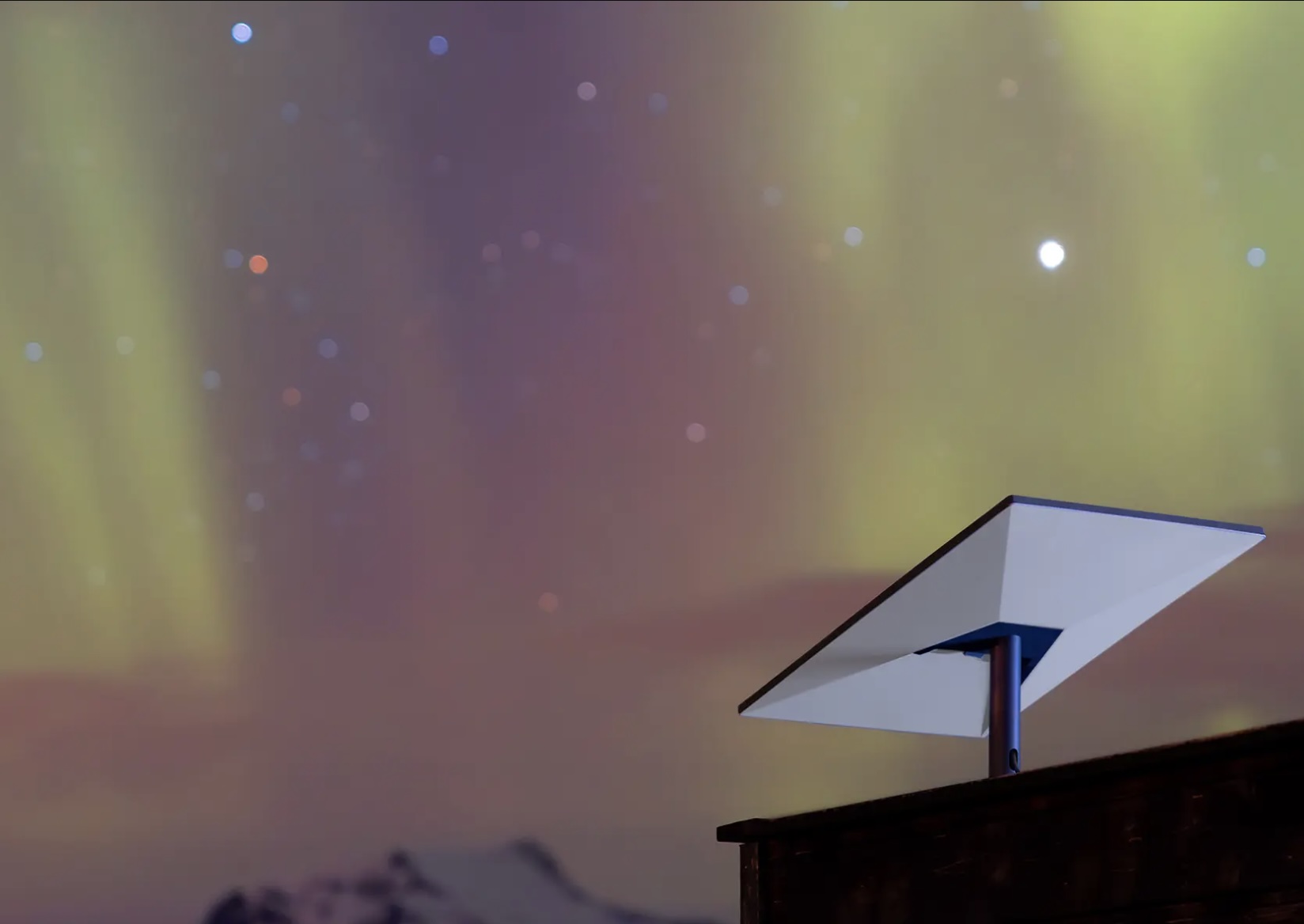
Starlink India’s launch cleared a key regulatory hurdle after securing a long-awaited license from the country’s telecom ministry. Starlink’s license approval in India paves the way for commercial operations to begin, marking a significant milestone after a three-year wait.
The Department of Telecommunications granted Starlink a Global Mobile Personal Communication by Satellite (GMPCS) license, enabling it to roll out its high-speed internet service. Local reports hinted that Starlink plans to launch its services within the next two months. Starlink India’s services are expected to be priced at ₹3,000 per month for unlimited data. Starlink service would require a ₹33,000 hardware kit, including a dish and router.
“Starlink is finally ready to enter the Indian market,” sources familiar with the rollout plans confirmed, noting a one-month free trial for new users.
Starlink’s low-Earth orbit satellite network promises low-latency, high-speed internet that is ideal for rural India, border areas, and hilly terrains. With over 7,000 satellites in orbit and millions of global users, Starlink aims to bridge India’s digital divide, especially in areas with limited traditional broadband.
Starlink has forged distribution partnerships with Indian telecom giants Reliance Jio and Bharti Airtel to streamline deployment and retail logistics. However, the company still awaits spectrum allocation and final clearances from India’s space regulator, IN-SPACe, and national security agencies before its full launch, expected before August 2025.
India’s satellite internet market is becoming increasingly competitive, with Starlink joining rivals like OneWeb and Jio Satellite Communications. While Starlink positions itself as a premium offering, its entry has sparked debate among domestic telecom operators over spectrum pricing.
Local reports noted that other players in the industry have raised concerns over the lower regulatory fees proposed for satellite firms compared to terrestrial operators, highlighting tensions in the sector.
Starlink India’s launch represents a transformative step toward expanding internet access in one of the world’s largest markets. Starlink could redefine connectivity for millions in underserved regions by leveraging its advanced satellite technology and strategic partnerships. As the company navigates remaining regulatory steps, its timely rollout could set a new standard for satellite internet in India, intensifying competition and driving innovation in the telecom landscape.
Elon Musk
SpaceX to decommission Dragon spacecraft in response to Pres. Trump war of words with Elon Musk
Elon Musk says SpaceX will decommission Dragon as a result of President Trump’s threat to end his subsidies and government contracts.
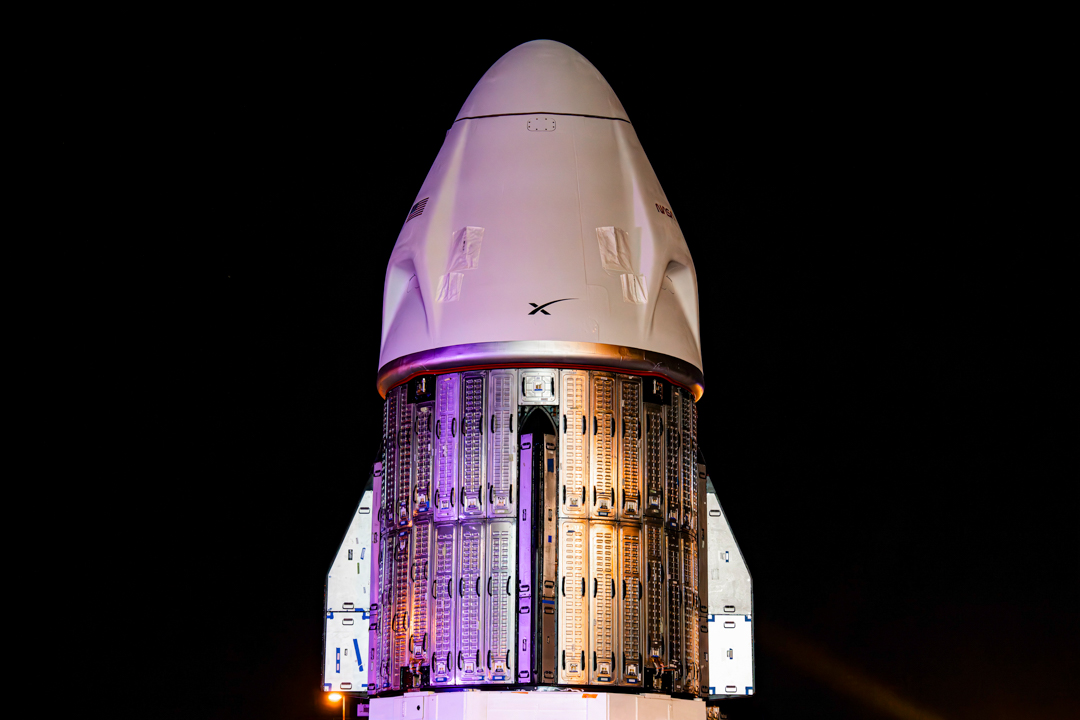
SpaceX will decommission its Dragon spacecraft in response to the intense war of words that President Trump and CEO Elon Musk have entered on various social media platforms today.
President Trump and Musk, who was once considered a right-hand man to Trump, have entered a vicious war of words on Thursday. The issues stem from Musk’s disagreement with the “Big Beautiful Bill,” which will increase the U.S. federal deficit, the Tesla and SpaceX frontman says.
How Tesla could benefit from the ‘Big Beautiful Bill’ that axes EV subsidies
The insults and threats have been brutal, as Trump has said he doesn’t know if he’ll respect Musk again, and Musk has even stated that the President would not have won the election in November if it were not for him.
President Trump then said later in the day that:
“The easiest way to save money in our Budget, Billions and Billions of Dollars, is to terminate Elon’s Government Subsidies and Contracts. I was always surprised that Biden didn’t do it!”
Musk’s response was simple: he will decommission the SpaceX capsule responsible for transporting crew and cargo to the International Space Station (ISS): Dragon.
🚨 Elon says Dragon will be decommissioned immediately due to President Trump’s threats to terminate SpaceX’s government contracts https://t.co/XNB0LflZIy
— TESLARATI (@Teslarati) June 5, 2025
Dragon has completed 51 missions, 46 of which have been to the ISS. It is capable of carrying up to 7 passengers to and from Earth’s orbit. It is the only spacecraft that is capable of returning vast amounts of cargo to Earth. It is also the first private spacecraft to take humans to the ISS.
The most notable mission Dragon completed is one of its most recent, as SpaceX brought NASA astronauts Butch Wilmore and Suni Williams back to Earth after being stranded at the ISS by a Boeing Starliner capsule.
SpaceX’s reluctance to participate in federally funded projects may put the government in a strange position. It will look to bring Boeing back in to take a majority of these projects, but there might be some reluctance based on the Starliner mishap with Wilmore and Williams.
SpaceX bails out Boeing and employees are reportedly ‘humiliated’
-

 Elon Musk1 week ago
Elon Musk1 week agoTesla investors will be shocked by Jim Cramer’s latest assessment
-

 Elon Musk3 days ago
Elon Musk3 days agoElon Musk confirms Grok 4 launch on July 9 with livestream event
-

 Elon Musk17 hours ago
Elon Musk17 hours agoxAI launches Grok 4 with new $300/month SuperGrok Heavy subscription
-

 News7 days ago
News7 days agoTesla Model 3 ranks as the safest new car in Europe for 2025, per Euro NCAP tests
-

 Elon Musk2 weeks ago
Elon Musk2 weeks agoA Tesla just delivered itself to a customer autonomously, Elon Musk confirms
-

 Elon Musk1 week ago
Elon Musk1 week agoxAI’s Memphis data center receives air permit despite community criticism
-
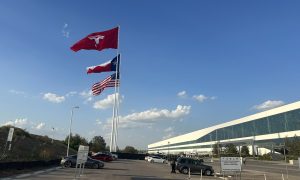
 Elon Musk2 weeks ago
Elon Musk2 weeks agoTesla’s Omead Afshar, known as Elon Musk’s right-hand man, leaves company: reports
-

 News2 weeks ago
News2 weeks agoXiaomi CEO congratulates Tesla on first FSD delivery: “We have to continue learning!”


